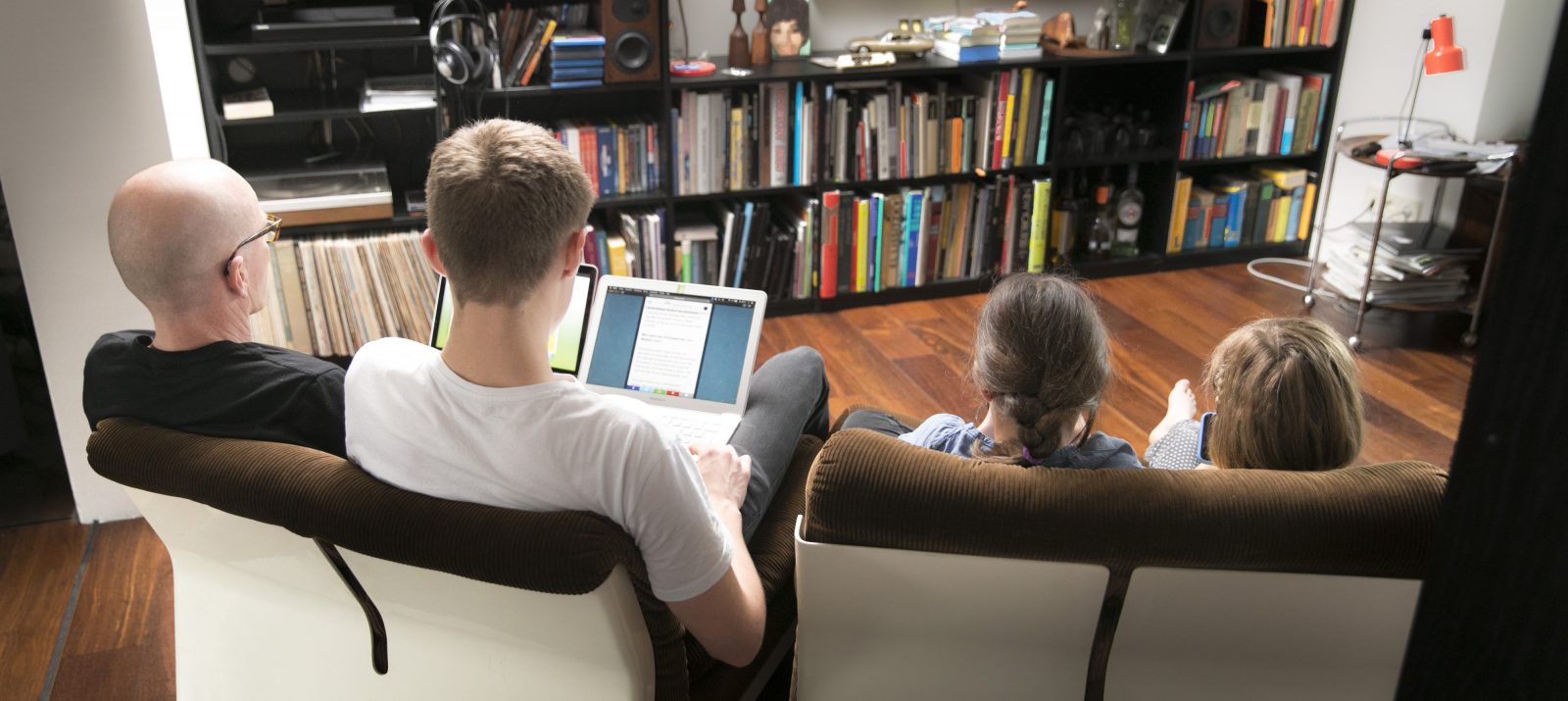
With media, children can learn, be creative, relax and have fun. As parents, you are responsible for ensuring that media consumption does not get out of hand. Common rules for media use in the family are helpful.
It is difficult to make a concrete recommendation as to how much time a child of a certain age may spend with media. First, because every child is different and can handle media differently. Second, because media are used for very different purposes – for learning, for spending time together with family, for distraction, etc.
Still, it can help to determine how much time your child is allowed to spend with certain media per day or week. In doing so, you should consider together beforehand which media use falls under this. Is it all about screen media and media use solely for entertainment and relaxation? Are there dedicated time budgets for learning with media?
For children of elementary school age, clear rules are very important because they still need a lot of guidance. They create stability in everyday life and prevent uncontrolled media use. For children in the early elementary years, a set amount of time in the day works better, such as an hour of media time. From the age of about 10, children are already quite independent and can allocate weekly quotas themselves.
For younger children, a fixed time for media use can be set – for example, after homework and before dinner. This structures everyday life.
Settings in apps or devices can help children not to exceed the agreed time. However, your child should gradually learn to put the smartphone or tablet aside by itself after the screen time is over. In this way, they practice and internalize a conscious approach to media.
Children are still developing. That’s why you should make sure they only use age-appropriate media. The desire to watch movies or play games that are only appropriate for teens 12 or 16 and older often leads to conflict within the family. Especially when your child begins to consume media increasingly independently, you should therefore discuss this necessary rule together.
Another important rule, at least until the age of 13, should be that new apps can only be downloaded and tried with your consent and together with you. Give your child more responsibility as he or she gets older and give him or her freedom to use media independently. From adolescence onwards, fixed screen times can be slowly eliminated. Nevertheless, there should be rules about which apps are used and how one’s own data should be handled, for example, when registering with social networks.
Accompaniment by parents is still important in adolescence. Talk to your child about his or her media use. Ask how and why it uses what and how it gets along. Also, always be responsive when problems arise!
Agree on rules only together with your child so that he or she can understand them. Also consider what happens in the event of a rule violation. You can put all of these things in a media use agreement. Be careful not to use media bans as leverage.
As a parent, you are an important guide for your child. Therefore, you should consciously act as a role model – also with regard to your use of the media. Certain rules should apply to everyone. For example, you can agree that smartphones have no place at mealtimes or set up smartphone-free family days. Your child will be increasingly influenced by friends as they reach school age. Therefore, it can help to communicate with other parents what rules apply with them. Perhaps there can be rules that are the same for everyone.